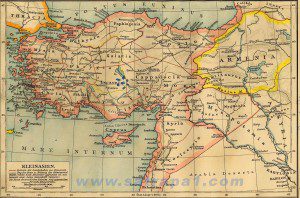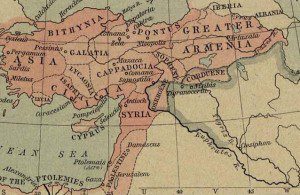Some day, I would love to write a history on religion on the frontiers, and I don’t mean the frontiers of faith or rational inquiry.
Governments throughout history have disliked regions that are difficult to control. They strongly prefer fertile lowlands over pastoral uplands or mountain regions. They dislike sprawling cities, especially cosmopolitan seaports. They especially loathe border regions, where foreign influences can penetrate easily, and where local people can easily flee where the writ of the law does not run. This is all the more true when the nation on the other society of that border is hostile or uncooperative.
Those general statements go far towards explaining religious configurations, especially when a government tries to enforce a strict orthodoxy. Religious minorities do best in jurisdictional borderlands, in regions where armies and police, Inquisitors and tax collectors, are least likely to penetrate. That is true whether we are dealing with both Catholics and Protestant Dissenters in early modern England, or Protestants in early modern Catholic Europe. It is also true of Christian minorities in Muslim states. Show me a map of the borderlands, and a relief map showing regions over two thousand feet or so, and I will show you where religious dissidents are most likely to survive and flourish.
Sometimes, those distant marginal regions prove to conceal hidden wealth, which give unexpected power to dissident minorities. Hence the Protestant Nonconformists of England and Wales found themselves in the coal-rich regions at the center of that country’s Industrial Revolution, while the despised Shia Muslims of the Arabian peninsula happened to be sitting on the region’s richest oil reserves. Never say that God lacks a sense of humor.
I posted recently on the early Christian expansion eastwards from Jerusalem, towards the powerful Persian realms successively ruled by the Parthians and the Sassanid dynasty. From the second century onwards, the Roman Empire clashed repeatedly with this eastern superstate, and the intervening lands often changed hands. Although the Sassanids based their power in Mesopotamia, that region briefly fell under Roman power under Trajan.
Through the seventh century, the dueling superpowers repeatedly clashed in the lands that we would now call Northern Iraq, Syria, and Eastern Turkey. Ultimately, the Romans utterly crushed the Sassanids, but it was a Pyrrhic victory, as the two exhausted empires fell easy prey to the surging force of Islam.
That superpower conflict had vast religious consequences. For one thing, the imperial rivalry meant that the two states were forced to tolerate a network of smaller kingdoms between their borders, which could serve usefully as buffer states, leaning from one side to another as conditions changed. Armenia was the greatest of these states, but other kingdoms and city-states rose and fell over the centuries – Osrhoene, Atropatene, Palmyra, and others. Two great border states, Armenia and Georgia, stubbornly maintained their Christian faith through the millennia, a stance made possible by their mountainous terrain.
As successive wars and persecutions swept the two major empires, so it was natural for refugees and dissidents to flee beyond the frontiers, making these small states a hothouse of religious development. The ruling family of Adiabene accepted Judaism. In the second century, Osrhoene became the first kingdom anywhere to establish Christianity as its official religion. When Roman religious constraints became too much, the center of Eastern Christian faith and scholarship moved eastwards across the border, from Edessa to Nisibis, which remained legendary well into the Muslim period.
Moreover, great powers used this religious complexity to justify their own policies. The Romans used the persecution of Christians to justify wars and invasions. The Persians in turn favored the Church of the East, the Nestorians, as a counterbalance to the Catholic/Orthodox. They also favored Jews against Roman-style Christians, leading to a terrifying massacre of Christians when the Persians took Jerusalem in 614. The Fall of Jerusalem, by the way, was one of the traumatic events of Late Antiquity: its shockwaves can be observed in the Qur’an, among many other places.
Trace the frontiers, and you follow the patterns of religious development.














